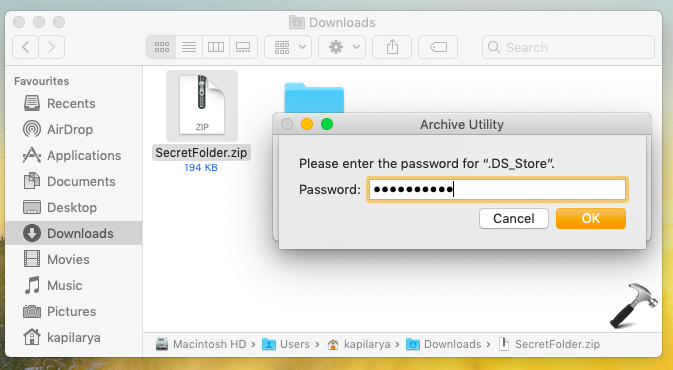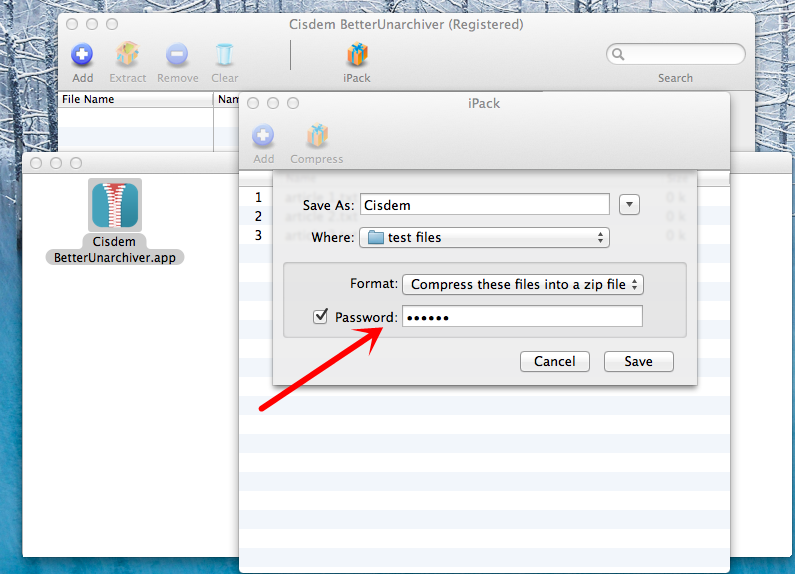

Step 4: Delete the file name from the Directory path. This will add the exact file path in the Terminal window. Then drag and drop it in the Terminal window. Step 2: Type unzip -d in the Terminal window. If you wish to unzip your password-protected file on Mac, you can once again take the help of Terminal to do the same. Here are the steps. To confirm the same, double-click on your ZIP file and check if you are prompted to enter the password. You will get confirmation that your selected file has been zipped and protected with your preferred password. Step 6: Type the password again to verify and press Return. The characters of the password will not appear on your Mac’s screen. Step 5: Type the password that you wish to use for the ZIP file and press Return. Step 4: Click Ok to let Terminal access your file location.

Plus, don’t forget to enter the file extension as well as the original file name.

Do note that the zipped file’s name should match the original file name. The Original File Name stands for the exact name of the file that needs to be zipped.

The ZIP file name stands for the name of your zipped file. Zip -er (ZIP file name) (original file name) Step 3: After you select the Directory, type the following command and press Return. For example, we have selected the Downloads directory.Īfter you hit Return, your Command Prompt line and Directory will change. The File Location is the directory where your files that need to be zipped are saved on Mac. Step 2: Type the following command and press Return. Step 1: Press Command + Spacebar to open Spotlight Search, type Terminal, and press Return. Ensure you keep access to your password for the ZIP file. The Terminal app on your Mac lets you create a password-protected ZIP file that can be shared across devices. Create Password Protected ZIP File on MacĪlong with saving storage space, a ZIP file can also save you time while transferring large files from your Mac. In this post, we will show you the steps to create and add a password to your ZIP file on Mac without installing any third-party applications or using any websites. You can add a password to your ZIP file to add a security layer to it and prevent unwanted access. You can create a ZIP file on your Mac and extract it on your iPhone. A ZIP file on your Mac lets you package and organize data without acquiring too much storage space.


 0 kommentar(er)
0 kommentar(er)
